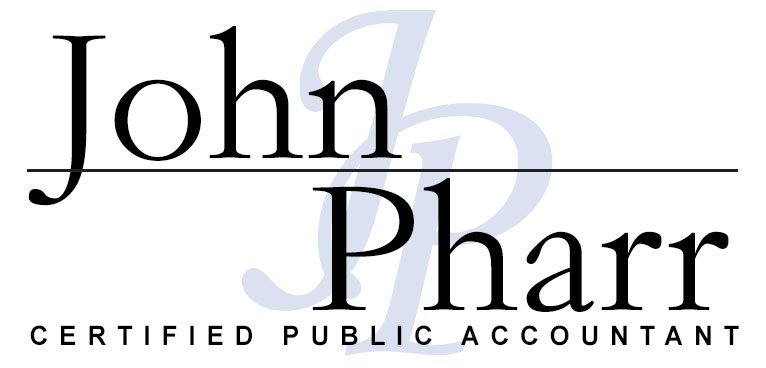Retire Rich & Tax-Free: How Roth IRAs Are Changing Retirement
So what is a Roth IRA, Anyway?
A Roth IRA stands as a cornerstone of retirement planning, offering a distinct tax advantage to those preparing for their golden years. Unlike traditional IRAs, where contributions are tax-deductible, a Roth IRA operates on a post-tax model. This means you contribute funds that have already been taxed, but in return, both your contributions and the earnings they accrue can grow without the burden of taxation.
The allure of a Roth IRA lies in its promise of tax-free withdrawals in retirement. Once you reach the age of 59½ and your account has been open for at least five years, you can tap into your Roth IRA without worrying about Uncle Sam taking a slice. It’s a straightforward arrangement: you pay your taxes upfront on the money you put in, and then you’re free to enjoy your earnings without further tax implications down the road.
In essence, a Roth IRA offers a trade-off: upfront taxes in exchange for tax-free growth and withdrawals in retirement. It’s a strategy that appeals to those who anticipate being in a higher tax bracket in the future or simply prefer the certainty of tax-free income during retirement.
How does a Roth IRA work?
Understanding the mechanics of a Roth IRA illuminates a strategic approach to retirement savings, characterized by its tax advantages and flexible contributions. Essentially, a Roth IRA operates on the principle of investing post-tax income, allowing for tax-free growth and withdrawals in retirement.
Contributing to a Roth IRA involves allocating funds that have already been taxed, distinguishing it from traditional IRAs where contributions are often tax-deductible. Once deposited, these funds have the potential to grow over time, shielded from the burden of taxation. Importantly, when the time comes to access these funds in retirement, withdrawals are not subject to further taxation, providing a compelling incentive for savers.
Various avenues exist for funding a Roth IRA, including regular contributions, spousal contributions, transfers, rollovers, and conversions. However, it’s crucial to note that regular contributions must be made in cash, precluding the use of securities or property for this purpose.
The Internal Revenue Service (IRS) imposes annual contribution limits on Roth IRAs, adjusting these thresholds periodically. These limits are consistent across traditional and Roth IRAs and apply cumulatively across all IRA accounts held by an individual, ensuring adherence to regulatory guidelines.
One of the key advantages of a Roth IRA is its flexibility and lack of mandatory distributions during the account holder’s lifetime. Unlike 401(k)s and traditional IRAs, there are no required minimum distributions (RMDs), affording individuals greater control over their retirement assets.
In contrast, traditional IRA contributions typically involve pre-tax dollars, often entailing tax deductions at the time of contribution and subsequent taxation upon withdrawal in retirement. This fundamental difference underscores the unique benefits offered by the Roth IRA in the realm of retirement planning and tax optimization.
Allowed Roth IRA Investments
Exploring allowable investments within a Roth IRA reveals a diverse array of options tailored to suit various investment preferences and risk appetites. Investors can deploy their contributed funds across an array of asset classes, including mutual funds, individual stocks, bonds, exchange-traded funds (ETFs), certificates of deposit (CDs), and money market funds.
However, it’s important to note that certain assets, such as cryptocurrency, are not directly permissible within a Roth IRA according to IRS regulations. Nevertheless, the advent of “Bitcoin IRAs” presents an alternative avenue for those keen on crypto exposure within their retirement portfolio, albeit indirectly.
Furthermore, the IRS delineates a list of assets that are categorically prohibited within an IRA, including life insurance contracts and derivative trades, underscoring the boundaries of permissible investments.
For investors seeking the broadest spectrum of investment opportunities, a Roth self-directed IRA (SDIRA) is an attractive option. This specialized category of Roth IRA empowers investors to take full control of their investment decisions, bypassing the constraints typically imposed by financial institutions.
In addition to traditional investment vehicles like stocks, bonds, cash, money market funds and mutual funds, a Roth SDIRA facilitates the inclusion of non-traditional assets in your retirement portfolio. This encompasses assets such as gold, investment real estate, partnerships, tax liens, and even ownership stakes in franchise businesses, enriching the diversification potential of the portfolio.
It’s worth noting that the maximum annual contribution limits for a Roth IRA in 2024 have been adjusted upwards, with individuals aged 50 and older now eligible to contribute up to $8,000, reflecting an increase from the previous year’s limit of $6,500 (with a corresponding limit of $7,500 for those aged 50 and above). These adjustments provide individuals with enhanced opportunities to increase their retirement savings and capitalize on the benefits of tax-advantaged investing.
How to open a Roth IRA
Opening a Roth IRA entails a series of steps and considerations aimed at aligning your retirement savings strategy with your financial objectives and preferences. The process begins by selecting an institution duly authorized by the IRS to offer IRAs, which encompasses a range of entities including banks, brokerage firms, federally insured credit unions, and savings and loan associations. Typically, individuals opt to establish their Roth IRAs with brokerage companies due to their specialized expertise in investment services.
Timing is a critical aspect of Roth IRA establishment. However, contributions for a given tax year must be completed by the IRA owner’s tax-filing deadline, typically falling on April 15 of the subsequent year.
Upon setting up a Roth IRA, individuals are furnished with two fundamental documents: the IRA disclosure statement and the IRA adoption agreement and plan document. These documents serve to clarify the regulatory framework governing Roth IRAs and formalize the agreement between the IRA owner and the custodian or trustee responsible for overseeing the account.
Notably, the landscape of IRA providers varies significantly, with each institution offering distinct advantages and features. Factors such as investment options, fee structures, and account requirements need careful consideration when selecting a provider. Investors should assess their risk tolerance and investment preferences to ascertain compatibility with a particular provider’s offerings. For instance, active traders may prioritize providers with lower trading costs, while others may look for institutions with diverse investment portfolios or additional banking products bundled with the IRA account.
Individuals should pay heed to account-specific requirements, including minimum balance thresholds and potential account inactivity fees. Existing relationships with financial institutions may also yield benefits, as some providers extend IRA fee discounts to their established customers.
It’s important to note that while most IRA providers offer conventional IRA accounts, including traditional and Roth variants, individuals seeking self-directed IRAs necessitate specialized custodial services. These accounts, which afford investors the latitude to hold a broader range of assets beyond traditional securities, mandate engagement with qualified custodians specializing in self-directed accounts, ensuring compliance with regulatory standards and investment objectives.
How to know if you qualify for a Roth IRA?
Determining your eligibility for a Roth IRA hinges on your income level and tax filing status, with specific thresholds set out for each category. The income ranges for both 2023 and 2024 contributions are structured according to marital status and filing arrangements, providing a clear framework for individuals to ascertain their eligibility.
For married individuals filing jointly, the income limits for full and partial contributions vary between $218,000 and $228,000 for 2023, and between $230,000 and $240,000 for 2024. Similarly, for married individuals filing separately but living with their spouse at any point during the tax year, full contributions are permitted for incomes below $0, while partial contributions are allowed for incomes below $10,000, both in 2023 and 2024.
Meanwhile, single filers, heads of household, and married individuals filing separately and living apart from their souse face income thresholds of less than $138,000 for full contributions and between $138,000 and $153,000 for partial contributions in 2023. These thresholds adjust slightly for 2024, with full contributions permitted for incomes below $146,000 and partial contributions allowed for incomes between $146,000 and $161,000.
Understanding eligibility within the phaseout range necessitates a simple calculation. Individuals falling within this range subtract their income from the maximum threshold for their category, then divide this difference by the length of the phaseout range. This calculation yields the percentage of their income that can be contributed to a Roth IRA.
Ultimately, the eligibility criteria for Roth IRA contributions are designed to accommodate a diverse range of income levels and household arrangements, providing individuals with opportunities to save for retirement in a tax-advantaged manner. By sticking to these guidelines, individuals can make informed decisions regarding their retirement planning and investment strategies.
The Spousal Roth IRA
A strategic approach for couples to increase their retirement savings involves leveraging the benefits of a spousal Roth IRA. This avenue allows one spouse to contribute to a Roth IRA on behalf of their partner, particularly beneficial when the latter earns less or no income. Despite its unique nature, contributions to a spousal Roth IRA adhere to the same regulations and constraints as regular Roth IRA contributions.
It’s important to understand that a spousal Roth IRA operates as a distinct entity, held separately from the Roth IRA of the contributing individual. This is because Roth IRAs are not designed to function as joint accounts, preserving the delineation of ownership and contributions.
Eligibility for making a spousal Roth IRA contribution is contingent upon meeting specific requirements:
Firstly, the couple must be legally married and choose to file a joint tax return, establishing their joint financial status.
Secondly, the individual making the spousal Roth IRA contribution must possess eligible compensation, ensuring compliance with IRS regulations governing IRA contributions.
Moreover, the total contribution amount for both spouses must not surpass the taxable compensation reported on their joint tax return, aligning with the overarching principle of contribution limits based on earned income.
It’s worth noting that while contributions to a spousal Roth IRA cannot exceed the contribution limits for a single IRA, engaging both spouses in this strategy enables the family to effectively double their annual savings potential. This collaborative approach to retirement planning empowers couples to maximize the benefits of tax-advantaged savings vehicles and secure their financial future.
Withdrawals: Qualified Distributions
Withdrawals from a Roth IRA offer flexibility and significant potential tax advantages, but understanding the rules governing these transactions is crucial. Contributions to a Roth IRA can be withdrawn at any time during the tax year without incurring taxes or penalties. If the withdrawal amount matches the sum of contributions made, it is considered a non-taxable distribution, regardless of the account holder’s age or the duration of the funds in the account.
However, the scenario changes when it comes to withdrawing earnings generated by the account. For such distributions to qualify as tax-free, they must meet certain criteria:
- Timing: A qualified distribution of account earnings must occur at least five years after the Roth IRA was established and funded for the first time by the account holder.
- Qualifying Conditions: The distribution of earnings is considered qualified if it meets one of the following conditions:
- The account holder reaches the age of 59½ at the time of distribution.
- The funds are used towards the purchase, construction, or reconstruction of a first home for the account holder or a qualified family member. This provision allows for a one-time withdrawal of up to $10,000 over the account holder’s lifetime.
- The distribution occurs due to the account holder’s disability.
- The assets are distributed to the beneficiary of the Roth IRA following the account holder’s death.
These conditions outline the circumstances under which withdrawals of account earnings from a Roth IRA can be made without incurring taxes or penalties. It’s essential for account holders to adhere to these rules to maximize the benefits of their Roth IRA and avoid potential tax liabilities.
The Five-Year Rule
When withdrawing earnings from a Roth IRA, potential tax implications and penalties hinge on your age and adherence to the five-year rule. Here’s a breakdown of the scenarios:
If you meet the five-year rule:
Under age 59½: Earnings are subject to both taxes and penalties. However, certain exceptions apply:
- First-time home purchase: A withdrawal of up to $10,000 is permissible, subject to a lifetime limit, without incurring the 10% penalty.
- Permanent disability: Withdrawals due to disability may avoid both taxes and penalties.
- Beneficiary distribution: If the account holder passes away and the beneficiary takes the distribution, taxes and penalties may be avoided.
- Ages 59½ and older: No taxes or penalties are applied to withdrawals.
If you don’t meet the five-year rule:
Under age 59½: Earnings are subject to taxes and penalties. However, exceptions exist where the penalty may be avoided:
- First-time home purchase: Withdrawals up to $10,000, subject to the lifetime limit, may avoid the 10% penalty.
- Qualified education expenses and unreimbursed medical expenses: These expenditures may exempt withdrawals from the penalty.
- Permanent disability: Withdrawals due to disability may avoid the penalty.
- Beneficiary distribution: Taxes may be avoided if the beneficiary takes the distribution.
- Ages 59½ and older: Earnings are subject to taxes but not penalties.
It’s important to note that Roth IRA withdrawals follow a “first in, first out” (FIFO) approach. This means that contributions are withdrawn first, followed by earnings. As a result, earnings are not considered withdrawn until all contributions have been exhausted. Understanding these rules is essential for maximizing the benefits of Roth IRA withdrawals and avoiding unnecessary taxes and penalties.
Withdrawals: Non-Qualified Distributions
When withdrawing earnings from a Roth IRA that fail to meet specific criteria, it results in what’s known as a “non-qualified distribution”, potentially triggering income tax or a 10% early distribution penalty. However, certain exceptions exist where the penalty may be waived, particularly if the funds are used for specific purposes:
- Unreimbursed Medical Expenses: If the withdrawal is utilized to cover unreimbursed medical expenses exceeding 7.5% of the individual’s adjusted gross income (AGI).
- Medical Insurance Premiums: In the event of job loss, withdrawals may be used to pay for medical insurance premiums.
- Qualified Higher Education Expenses: Withdrawals earmarked for qualified higher education expenses, including tuition, fees, books, supplies, and equipment, for the Roth IRA owner or their dependents.
- Childbirth or Adoption Expenses: Withdrawals made within one year of childbirth or adoption, not exceeding $5,000.
It’s important to note that if withdrawals are limited to the amount of contributions made within the current tax year, including any earnings on those contributions, the transaction is considered a reversal of the contribution. For instance, if an individual contributes $5,000 in the current year, generating $500 in earnings, withdrawing the $5,000 principal incurs no tax or penalty, while the $500 gain is treated as taxable income.
Roth IRA vs. Traditional IRA
Determining whether a Roth IRA offers greater advantages compared to a traditional IRA hinges on many factors, including the individual’s tax bracket, anticipated tax rate in retirement, and personal preferences.
For individuals projecting a higher tax bracket during retirement, opting for a Roth IRA may prove more beneficial. This is because the tax savings accrued in retirement, where withdrawals are tax-free, often outweigh the taxes paid on contributions at present. Consequently, younger individuals and those with lower incomes stand to gain the most from a Roth IRA.
Moreover, initiating IRA contributions early in life capitalizes on the compounding effect of compound interest. As investments and their earnings are reinvested over time, they generate further earnings, creating exponential growth in savings.
Even for individuals anticipating a lower tax rate in retirement, a Roth IRA offers the advantage of a tax-free income stream during retirement, presenting an attractive option for financial planning.
The flexibility of Roth IRAs extends beyond retirement, as unused assets can continue to accumulate tax-free and be passed on to heirs upon the account holder’s death. Unlike beneficiaries of traditional IRAs who are subject to taxes on distributions, beneficiaries of Roth IRAs inherit tax-free assets. Additionally, beneficiaries have the option to stretch out tax deferral by taking distributions over a decade or, in certain cases, over their lifetimes.
Some people opt to open or convert to Roth IRAs as a hedge against potential future tax increases, enabling them to lock in current tax rates on converted balances. Notably, executives and high-income earners contributing to Roth retirement plans through employers, such as Roth 401(k)s, can rollover these plans into Roth IRAs without tax consequences. This strategy allows them to avoid mandatory minimum distributions upon reaching the age of 73, providing additional flexibility and tax efficiency in retirement planning.
Which is better: A Roth IRA or a 401(k)?
Choosing between a Roth IRA and a 401(k) retirement account involves several factors, each offering distinct advantages for savers. Both account types facilitate tax-free growth of savings, albeit through different mechanisms.
Roth IRAs offer tax-free withdrawals during retirement but do not provide immediate tax benefits upon deposit. Conversely, contributions to 401(k) accounts are made pre-tax, reducing taxable income in the present, but withdrawals are taxed in retirement.
Contribution limits vary between Roth IRAs and 401(k)s, with 401(k)s typically allowing higher contributions. 401(k) plans may include employer matching contributions and providing an extra incentive for participation. However, they often entail higher fees, mandatory minimum distributions, and a more limited selection of investment options compared to Roth IRAs.
The maximum annual contribution for a Roth IRA in 2023 is $6,500 for those under age 50, equating to approximately $541.67 monthly. For individuals aged 50 and older, the annual limit increases to $7,500, or roughly $625 monthly. Notably, there is no monthly limit imposed; rather, an annual cap applies.
For the year 2024, the contribution limits for Roth IRAs increase to $7,000 annually or $583.33 monthly for individuals under 50, and to $8,000 annually or $666.67 monthly for those aged 50 and older.
What Are the Advantages of a Roth IRA?
Roth IRAs offer distinct advantages, such as a broader range of investment options, compared to traditional employer-sponsored retirement plans. While they do not typically feature an employer match, Roth IRAs provide greater flexibility and control over investment choices.
Individuals who foresee being in a higher tax bracket during retirement may find Roth IRAs particularly advantageous. Contributions to Roth IRAs are made with after-tax dollars, meaning withdrawals, including contributions (but not earnings), can be accessed at any time without incurring taxes or penalties.
Moreover, managing a Roth IRA is straightforward, as individuals can establish accounts with various financial institutions including brokerages, banks, and qualified financial firms. This flexibility allows investors to tailor their investment strategies according to their preferences and financial goals.
What Are the Disadvantages of a Roth IRA?
Roth IRAs come with certain drawbacks that may affect their appeal to some investors.
Unlike 401(k) plans, Roth IRAs do not offer an immediate tax deduction on contributions, meaning investors don’t receive an up-front tax break. Additionally, the annual contribution limits for Roth IRAs are typically lower, approximately one-third of those for 401(k) plans.
High-income individuals may face restrictions or complete ineligibility for Roth IRA contributions, limiting their ability to utilize this retirement savings option. These factors will influence investors’ decisions when considering the suitability of Roth IRAs for their financial goals and circumstances.
The Bottom Line
A Roth IRA stands as a unique retirement savings vehicle, offering tax-free withdrawals under specific conditions. Individual Retirement Accounts allow account holders to withdraw funds without penalty on a tax-free basis after reaching the age of 59½ and owning the account for a minimum of five years. Additionally, certain life events, such as purchasing a home, funding education expenses, or the birth or adoption of a child, permit penalty-free withdrawals from a Roth IRA.
Contributions to Roth IRAs are made with after-tax dollars, meaning investors do not receive an immediate tax deduction as they would with a traditional IRA. This structure allows for tax-free withdrawals of contributions, provided certain criteria are met. Essentially, while Roth IRAs do not provide an upfront tax break, they offer the advantage of tax-free distributions in the future, contrasting with the tax implications of withdrawals from 401(k) plans or traditional IRAs.
For individuals projecting higher tax brackets during retirement or anticipating increased tax rates in the future, Roth IRAs present a good option. Withdrawals from Roth IRAs are not subject to federal or state income tax, providing tax-free income during retirement—a benefit not available with traditional retirement accounts like 401(k)s or traditional IRAs. This tax advantage underscores the appeal of Roth IRAs for those seeking to optimize their retirement savings and minimize tax liabilities in the future.
PharrCPA
Ready to take control of your retirement savings and minimize your tax liabilities? At PharrCPA, we specialize in comprehensive retirement planning strategies tailored to your unique financial goals and circumstances.
Let us help you navigate the complexities of Roth IRAs and other retirement accounts, ensuring you make informed decisions that optimize your financial future. Contact us today to schedule a consultation and start planning for a tax-efficient retirement with confidence!




